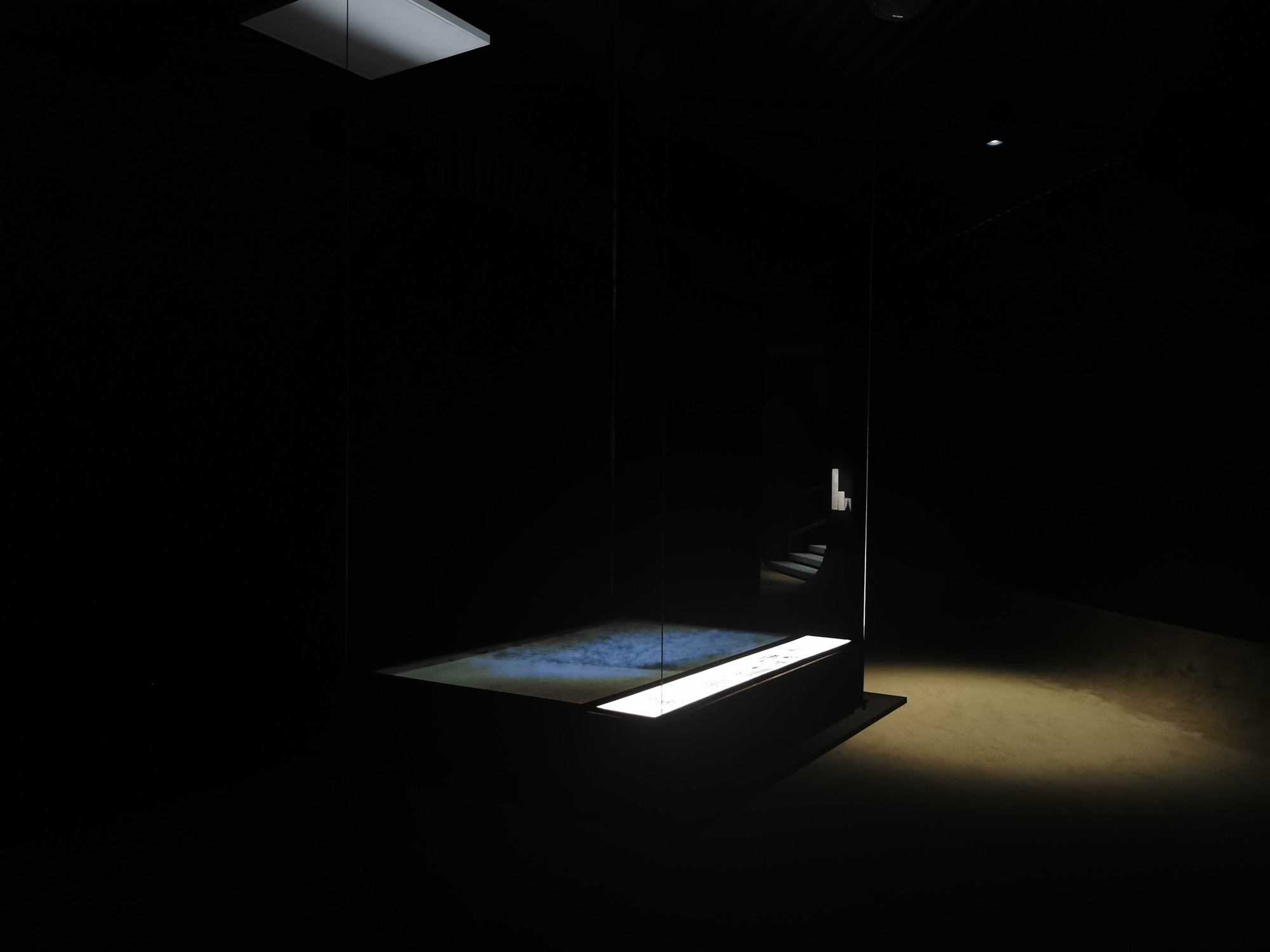Field Notes from the Pluriversity: Reflections on the 18th Venice Architecture Biennale
Meeting through Archives: A Conversation with Courage Dzidula Kpodo and Manuela Nebuloni
Meeting through Archives: A Conversation with Courage Dzidula Kpodo and Manuela Nebuloni
Manuela Nebuloni and Courage Dzidula Kpodo met with us in the Serra dei Giardini, where for over an hour, they shared their collection of postcards from Ghana with us.
MN: Manuela Nebuloni/ CDK: Courage Dzidula Kpodo/ CFQ: Clarisse Figuereido de Queiroz/ YKL: Yidan Karel Li
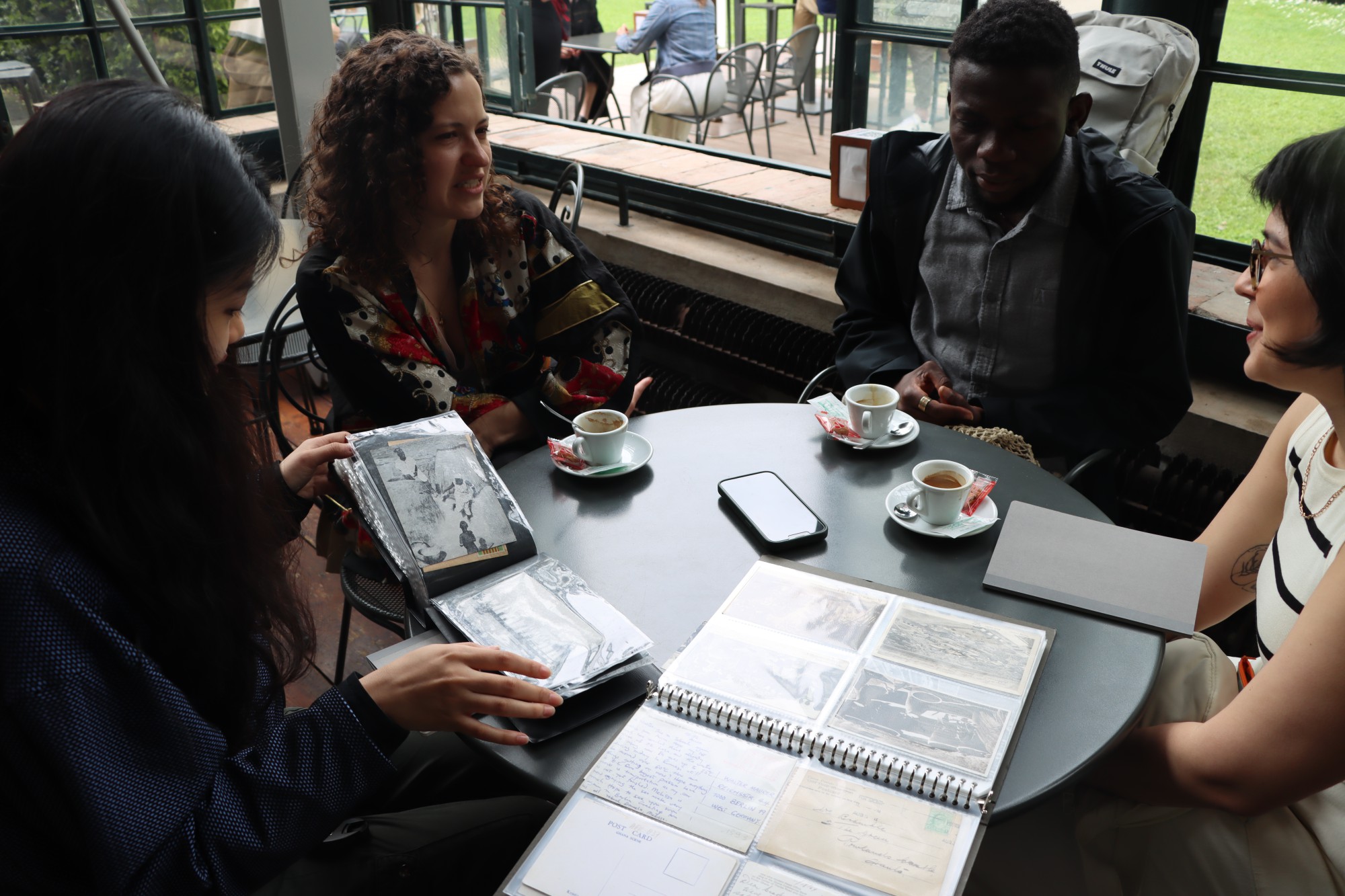
Giardini means gardens. Within these gardens there are several structures that are national pavilions that were built by nations. Then there's a number of nations that don't have this physical permanent space inside Giardini. During biennials, both art and architecture, they rent out spaces in the Arsenale or nearby villas, so they pay a price to be in the Biennale. So it was big news back in 2019 when Ghana rented the first Ghanaian Pavilion during the art Biennale. There is a politics of culture at play. It is the state or the Ministry of Culture that allows some money and then mandates someone to curate it. This year there is the first Nigerien Pavilion, which is on one of the little islands. It is in a palace.
Yes, even on our way here—we had a layover in Lisbon—and I was listening to some architects that were obviously coming to the Biennale talking about how they wanted the Portuguese pavilion to be a context. It's always someone that is chosen by politics and privilege and they thought it should be a context amongst all Portuguese architects.
That's really interesting. Yesterday, we met with the curators of the Bahrein Pavilion, who are good friends with me because they also went to MIT. They were explaining they got the position through a contest. The Minister of Culture called for applications, and then they applied. So it is interesting. I don't think Ghana has had a competition like that yet or probably ever will. But there is a lot of politics.
I'm not even sure that a competition would solve the issue because there still is a jury….
That’s interesting. No, I don’t think so either.
The idea is that whatever state agency is in charge of the pavilion will involve a rotating number of curators that can involve a number of artists. The idea should be to relate to contemporary curatorial issues of the year. And yeah, still having a competition there would mean having a jury. Another interesting point is the role of geopolitics and economics. For example, the Russian Pavilion is closed this year because of the war.
As it should be. Right I mean, It'll be weird to have a war going on and the pavilion happening at the same time without addressing this question.
Years ago Venezuela had a major financial crackdown. So the question was, will they have a pavilion or not? In the end, they had a very low-budget one, but they used the occasion to make an apology for the state, to defend itself [from criticism].
It could even be extended to the question of to what extent the national pavilions at the Biennale represent the condition of that country? Is it a slice of their societies? Is it an accurate reflection of its demographics and political environment?
It’s a very good point, because I think that at the Biennale, we are so far removed from the start geography of any country? No, there's very little choice but to collapse these complex [social issues]. And when you do, things get lost. So it's not a full representation of everything that's going on in the country; a certain [amount] of collapsing needs to happen for us to be able to see something here.
I think it's also very much left to the sensitivity of the artist or the curator to choose the themes. Some artists talk about identities, some about politics; others will have a more formal approach. I also don't think that biennials should be necessarily a chronicle of what has happened during the past two years in a country. There is artistic freedom, but there is also universality.
Different kinds of issues.
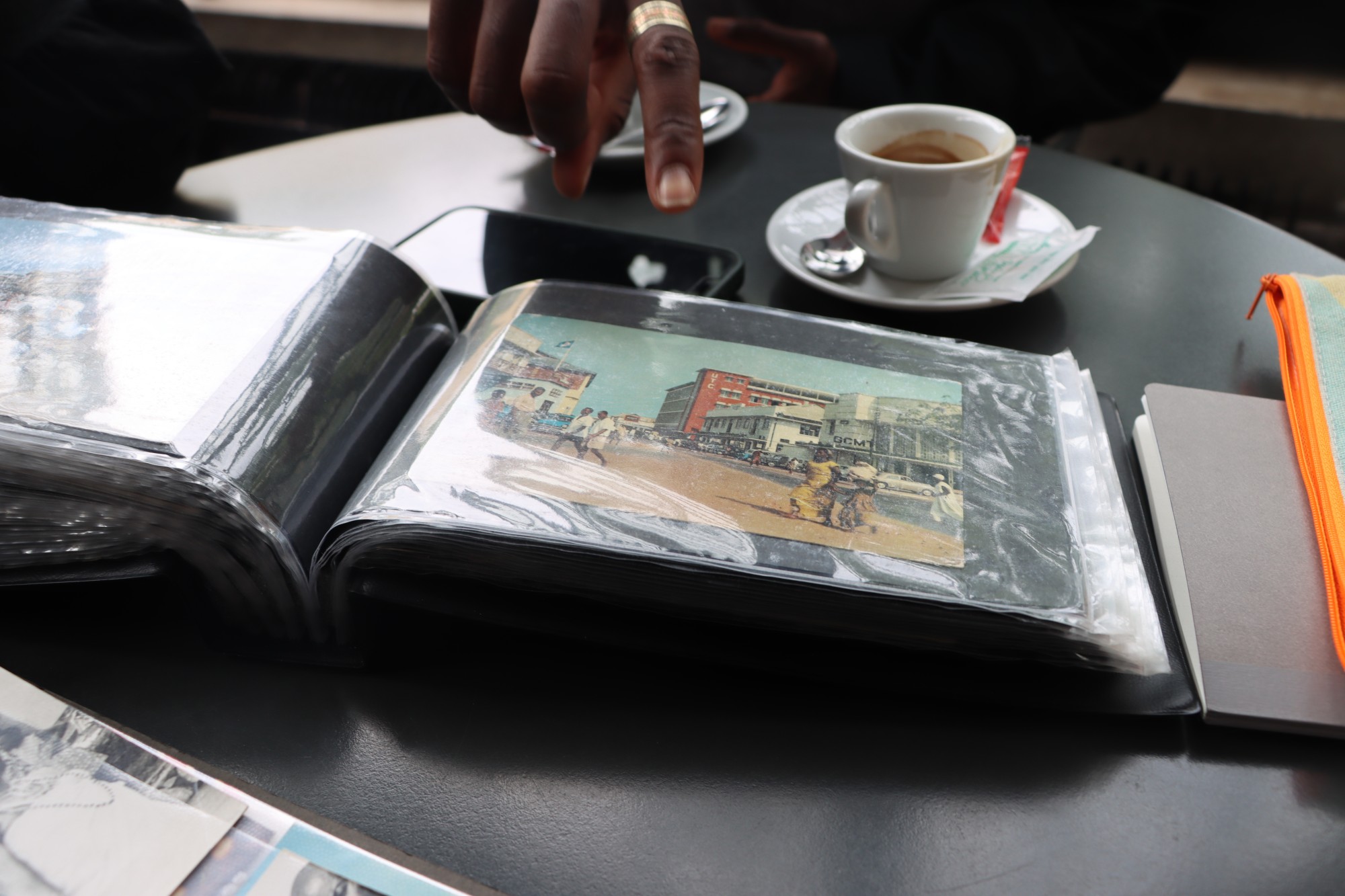
The theme is laboratory of the future, and I am guessing, at least from what I've seen from your work, is that in order to address the future, you have to address the past as well.
Yes, and during COVID, the Biennale had to be canceled, so instead, they did an exhibition on the Biennale’s archives. It was in the Central Pavilion and curated by Cecilia Alemani, who is also the curator of the High Line in New York. It was interesting because it is an old institution, and it withstood protest movements and student movements. So we were drawn to this self-reflection. But, Courage, maybe you wanted to introduce how you got in touch with the Biennale.
Well, to be very honest I got an email. I don't know Leslie [Lokko] personally, but I've been to a number of events back home in Ghana. I think there are people that have been posting on social media and writing about some of these questions and themes on Instagram. So I think she heard of me through people near to her. I think her team is very active researching online. So I received an email saying something like, “Hey, would you like to show what you have been doing at the Biennale?” Maybe we should talk about our project with the postcards, though. So, Manuela had been collecting postcards. It’s an interest of hers that started in 2020 during COVID.
Yeah! Look, I brought you some to see. This is a small part. So the thing is, Courage is Ghanaian. And he has an interesting trajectory as a student….
So I've been looking at archives and posting stuff on my social media. So I went to the development office in my university. It’s a university established by a professor that came from the AA [ Architectural Association]. So there's a lot of history there, a lot of drawings that I found very interesting. So I took them and compared them to the actual buildings that were built, and then I posted my findings on social media to see what people would say. And so through that, yeah, I think I got to see what you were doing. But of course, it's also a form of archiving.
How did you two meet?
We met through the archives.
Yeah that’s what I was saying. We met on Instagram.
DMs?
Yeah.
My relationship with Ghana was a bit of a random one because I was actually in New York working. And I couldn't stay there for visa reasons. So I had to go back to Italy. And I basically landed this job where they told me, “Okay, now you’re going to work with the African University.” And I was like, “Okay, but I've never been to Africa before!” So I decided to go myself one summer and see. During my research I wanted to find an art institution—I could not just do without a reason—and I was aware of Ghana's cultural vibrancy. These are very, very important years for Ghana. So I said, “Okay, I will go to Ghana;” and then I became friends with a group of people who are artists there. And then COVID hit. It was like, “Okay, I want to go to this country, but I cannot go.” So I decided to just buy an image online for $1 on ebay.
So the first time you didn't find this [a postcard], like in a fair, you bought it on eBay?
Yeah, most of these are from the Internet.
Exactly. So I've always had an interest in old stuff. My dad collected papers and old furniture. I was brought up surrounded by antiques, and I think I might be a hoarder! Also just being Italian, I feel I work in living archives. But I started out with a longing for Ghana. And then I said, “Okay, no, but these things are interesting, they are easily accessible, and they're cheap. They're old, they are much more valuable than their actual market value. So let's bring them together.”
I figured out that this could be a tool for me to learn about a country that I know anything about. Symbolically, it is also a getaway, a retreat into everything that is unknown to me. I started thinking, too, about the school system in Italy. It doesn't inform you on what happens in other continents. The schoolbooks blur information.
Certain phrases they don’t use. In the US there is a battle over critical race theory now.
Exactly, it is similar here, or they do [include it] but they simplify the matter. But, long story short I wasn't even collecting the hard copies; I was just saving images. Then I thought, if we want to do something, like physical, we need hardware, so I started to buy them. And for me, it is again, a learning exercise, to address the lack of information about a continent. For Courage, maybe it also has a deeper academic root.
Do you think the Biennale, as an institutional event, is kind of coping with what you just described with the European school system as possessing an inherent lack of awareness beyond its borders ? Do you think it's trying to frame itself as a place to address these gaps?
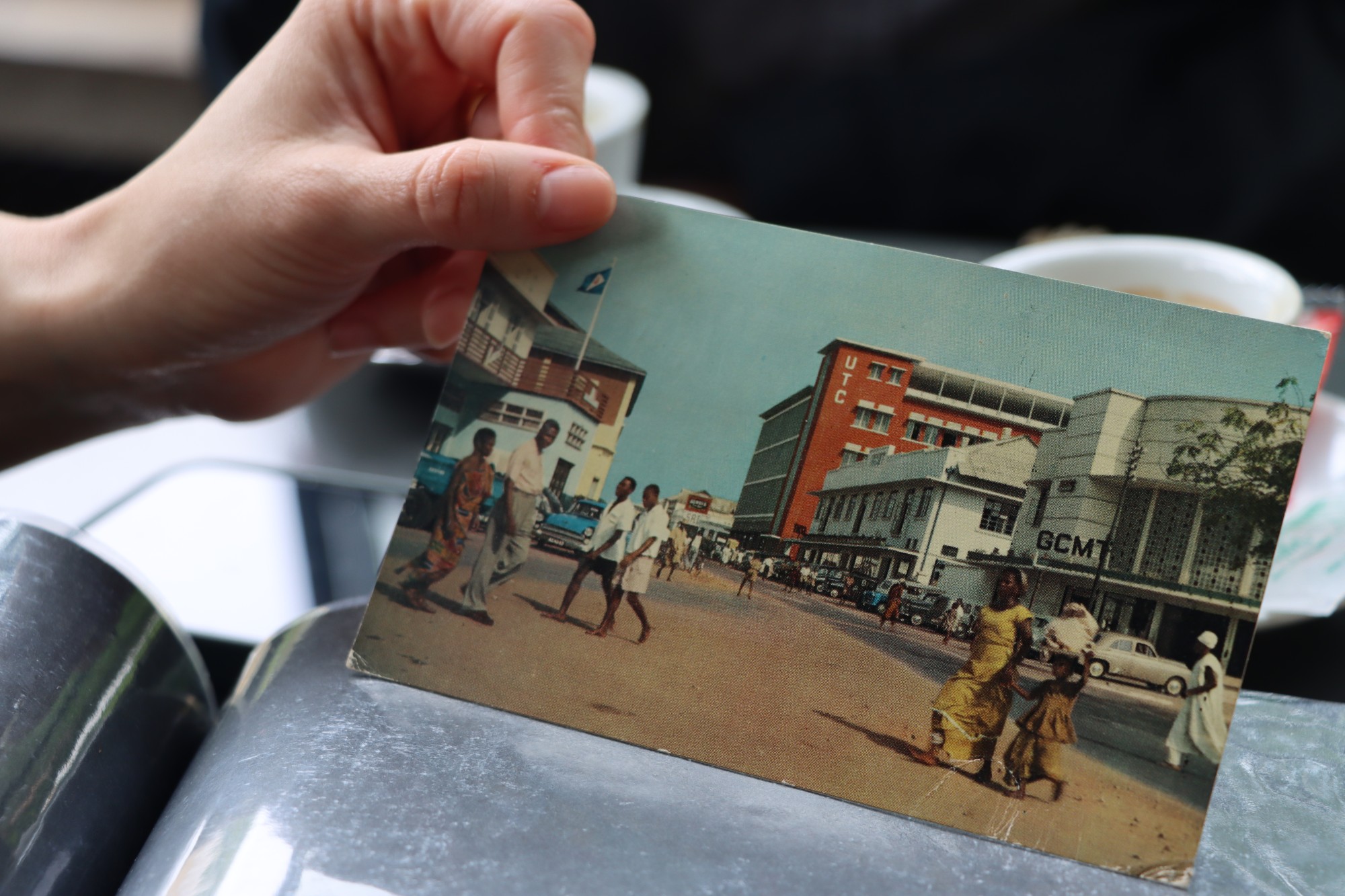
I think they're trying to, but it is not enough. Of course, the fact that Leslie [Lokko] was invited was a gesture towards such an opening. But it will not be enough to have just one edition of the Biennale. But this began, too, in I think 2015 with one of the art biennales that was about non-Western work.
There's been a certain renewed attention to Africa, in the arts, that’s been going on for some years now. I think that our sector [architecture] is just catching up, just as we always catch up. But I think Manuela is right. This isn't enough, but at the same time, you have to realize the scale of an event like this. To have the whole event curated from a certain viewpoint of the continent as being a laboratory for the future—I think there's a lot of power in that in kickstarting, or jump starting. You know, how the car doesn't start and so you push it or you hardwire it and then it starts, and it gets the car going. I think that is what this Biennale is trying to do, and I think it has potential for that because it really is the biggest event in architecture. And it's such a hotspot. You know, there's so many people. But in itself, it is not enough. It has to be continuous.
I wouldn't say this is the first one, like this one is important for the work of architecture. Art-wise, there was a Documenta years ago [2012] curated by Carolyn Christov-Bakargiev. That was also about non-Western participation with artists from Cambodia and many countries that you usually don't see at biennales. The latest Documenta was curated by ruangrupa, which is a collective of curators from Indonesia. So there are efforts. What are the challenges to keep it going?
I think the biggest challenge or the biggest pet peeve, or whatever you want to call it, that I have with events like this is we have to go to that audience. As Manuela said, if you grew up in Europe or America—and just from the little time that I've spent there for my Masters, I realize that there is such a large void, right? I think now they recognize that void, and events like this are supposed to, are meant to address the void in some regard. But still, the audience is very much a Western audience. We're here showing postcards about Ghana, but I don’t see so many Ghanaians. So I think, for me, personally, at least, a space like Instagram, where we started sharing, holds a lot more relevance. There's still good things that come out of events like this, but I think we need to be aware, we need to be conscious of the fact that there's a certain group of people that we are catering to. If we want to expand it, we should consider the people that these stories belong to. I mean, look at it, these are people's stories, like someone put this thing up here [gestures to the room]. Someone was contracted to, you know, plant these edges [gestures to the garden outside]. There’s multiple stories, and the more you look at it, there are more and more layers.
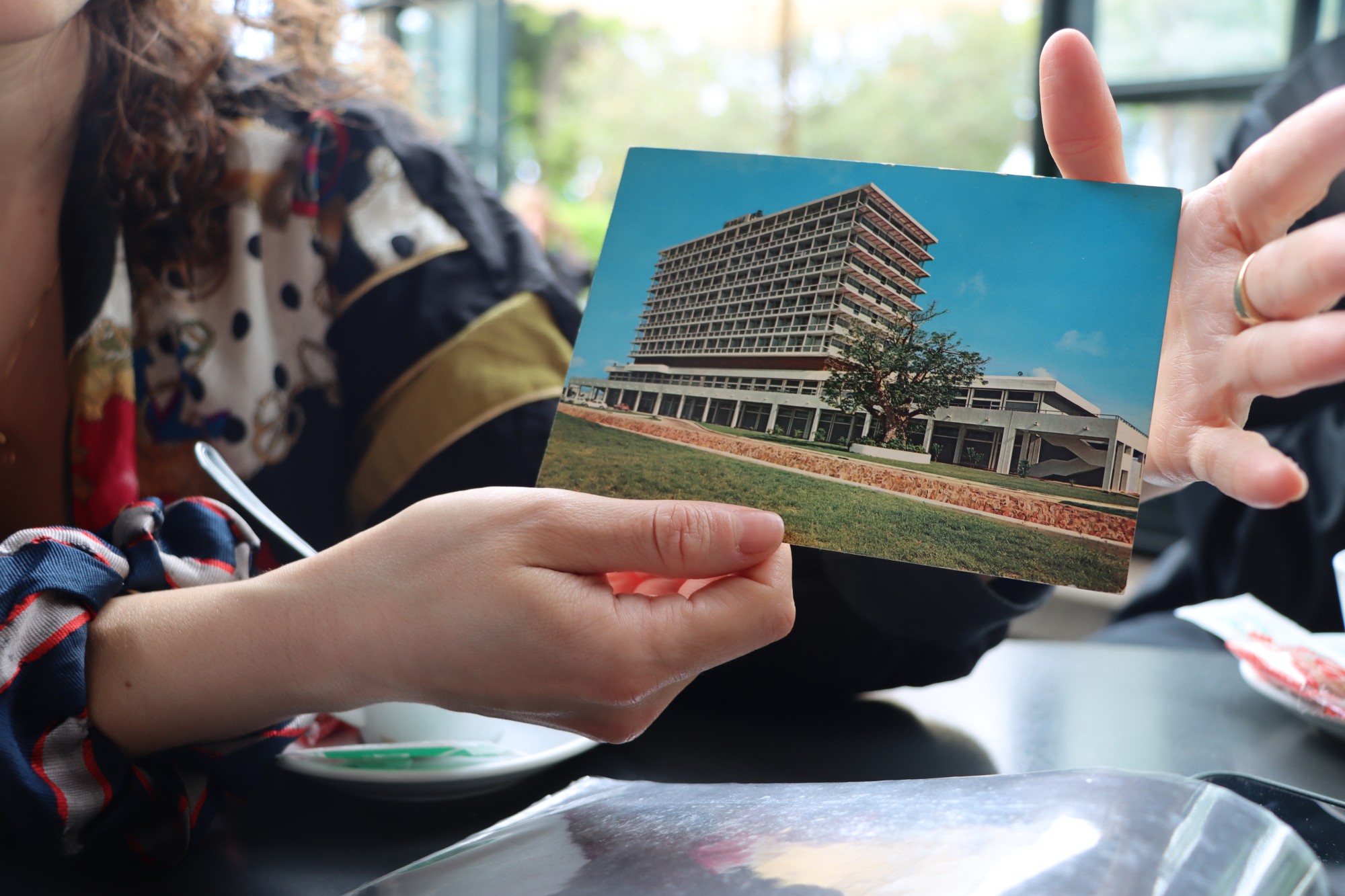
The conversation continues to questions of collaboration before shifting to modernism’s role in postcolonial nation-state building.
We see buildings that are very modern right? Probably built from concrete and all that. It's all arriving after the country's independence and this need for a certain [national] image. I think the very fact that these postcards were sent around the world was also doing some of that work. So before social media, you had a postcard.
So is this concrete style is associated with the idea of modernity?
Exactly yeah. It has become quite ingrained in the country, whereas now people are less receptive to building with earth bricks, for example. It’s a question of prestige.
Western images.
Yeah exactly. But, spending time with these buildings, we see they are not all bad, too. They have done things that we benefit from today. I call myself a Ghanaian partly because of these things that were built. They provided us with a certain type of identity. So imagine Brasília.
Right. I mean, being in New York, as a Brazilian is also part of my displacement. Like that's how I read it, you know?
But it also reaches you.
Right, it's part of my displacement, but I have to be there. Like I have the right to be there, even though I'm often conflicted about it.
But also, like, for me, these modernist Ghanaian buildings are stunning in the first place. They are a documents of their time when there was a need for building—and building fast—and they were functional. They were also engaged in a diplomatic relationship with Eastern Europe. They were all involved in the Non-Aligned Movement. So Kwame Nkrumah, the [first] president of Ghana and Tito, the president of Yugoslavia had quite a strong bond that also translated with him [Tito] sending workers to build [Ghana’s] infrastructure, and also—excuse me for the very non-academic metaphor—but if you think of Italy, you think of the tomatoes and pasta, which, of course are not indigenous—they come from America, but now, we cannot discern them from Italian culture.
It’s become a part of it. That’s what these buildings have become.
This is African architecture, you cannot not call it African.
Even before these modernist buildings, there were colonial buildings that the British introduced. Yet, after there was an aspiration to become part of a certain global system and conversation. At the same time there was a struggle to do away with the former colonial masters and their images, and to create [our own] identity. That’s why Ghana turned to others, like those in Eastern Europe.
